If you're a small business owner, chances are you've considered starting a blog to help promote your products or services. After all, blog posts are a great way to share your expertise with potential customers and build your brand.
However, before you start cranking out new blog posts, it's important to take a step back and make sure your blog is properly formatted. That's because bad blog post formatting can have serious consequences for your business.
Here are 11 blog post formatting tips so you can start blogging like a pro and make your next post stand out!
How Blog Post Formatting Can Hurt Your Business | How to Format a Blog Post
You can click on these links below to jump on a specific section:
What Is a Blog?
A blog article used to be like an online personal diary where people shared stories about their life. Later on, it has progressed into a medium that provides readily accessible information online. In most cases, it includes text, images, videos, and graphics interchange format or GIFs.
Anyone may start their own blog either for personal or professional use. However, if you’re blogging for business, your goal must be to rank your blog page high in search engines. This helps you reach out to potential customers, which may lead to increased business profitability.
How Do You Structure a Blog?
Blog templates have undergone changes over time. But most blog posts still include the following features:
- Blog post title: This captures your reader's attention. It also makes a promise to your audience which you must fulfill at the end of your blog.
- Introduction: In this part, you must set the mood and hook your blog readers.
- Main body: Your goal here is to hold your audience’s attention as you present your ideas.
- Sidebar: This makes your page and content easier to navigate. In this area, you can say something about your business and place your contact information.

- Conclusion: One of the best practices toward the end of a blog post is writing a summary or key takeaways and getting your reader to take action.
- Footer: This usually includes internal links to disclaimers and privacy policies.
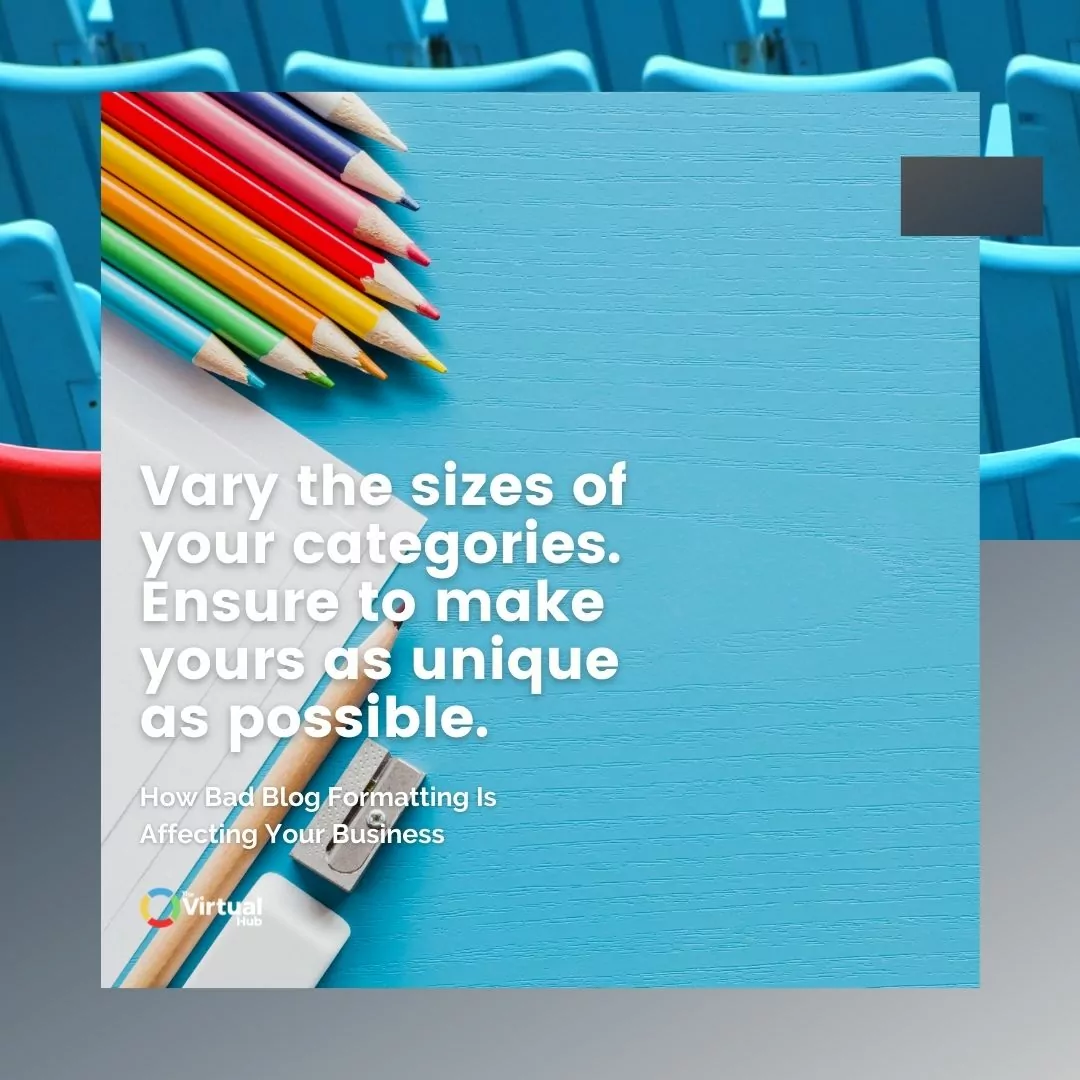
How Does Blog Post Formatting Affect Your Business?
Bad blog post formatting can have a number of negative effects on your business. For starters, it can make your thought leadership post difficult to read, which means that potential customers may not bother to engage with your blog content.
Additionally, poor blog post formatting can also discourage organic traffic and make it harder for potential customers to find your site. What's more, it can even make your blog look unprofessional, which could lead people to question your brand's credibility!
Here are additional ways that bad blog post formatting can hurt your business:
Bad Blog Formatting Can Cost You Customers
Readers usually leave a page due to complicated structure, too much navigation, or broken internal and external links. When this happens, it’s possible that they won’t return to your blog.
If your competitor provides the same products and services but in a better format, you could lose your customers to them.
What to Avoid: Too Short or Too Long Blog Post
Put yourself in your readers’ shoes. How would you react to a blog with 150 words? Do you think that this length is enough to discuss a point and back it up with examples and evidence? It’s also important to note that extremely short blogs can affect your page’s search engine optimization or SEO.
Meanwhile, how would you feel if you see a blog post with long paragraphs? Will you have time to read an entire blog with more than 4,000 words?
What to Do: Limit Your Paragraph and Sentence Length
Keep in mind that many viewers don’t read a whole blog. Instead, they just skim. So write short paragraphs and sentences, and limit your lines to four per paragraph.
What To Do: Limit Your Paragraph And Sentence Length

Hyperlinks are important for two reasons. First, they help people find additional information about the topic you’re discussing in your post. Second, they help improve your SEO.
Google uses something called PageRank to determine where your website should show up in search results. Part of PageRank is based on the number of other websites that link to your website. So, the more inbound links you have, the better.
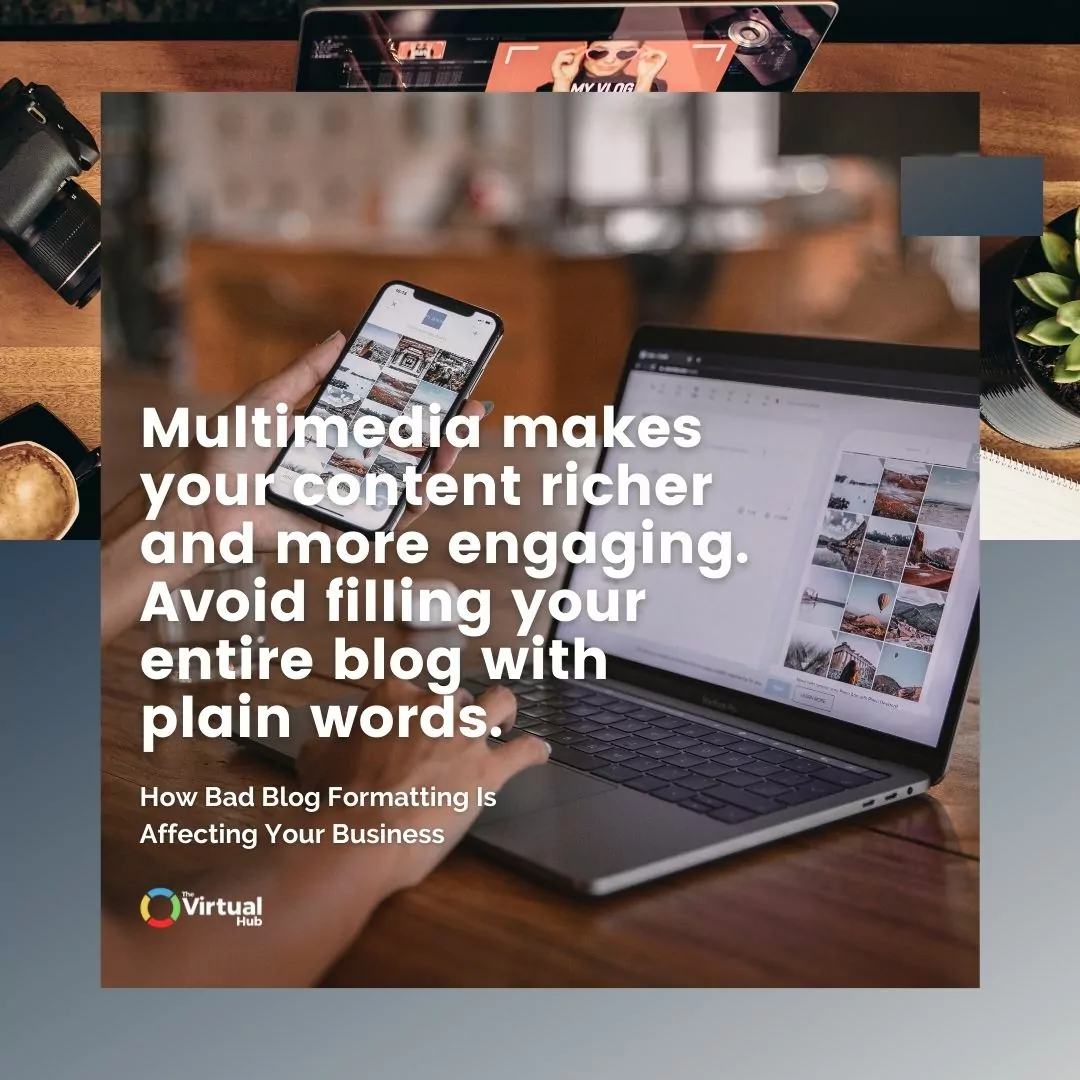
What to Do: Use Headlines
Headlines are what help your readers understand what your post is about at a glance. Imagine if every blog post you came across just had a big block of text with no headings or subheadings. It would be pretty difficult to figure out what the author was trying to say, right?
This is why headlines are so important. Not only do they make your posts easier to read, but they also help search engines like Google understand what your post is about so they can rank it accordingly.
What to Do: Embrace Spaces
White space offers a break for your readers’ eyes. It gives your audience room to breathe and guides them through your page. It also helps focus their attention on the most significant parts of your blog post.
What to Do: Use Numbered or Bulleted List
Lists are a great way to format your blog posts. They make the information easier to digest and they help break up big blocks of text.
People love lists because they’re easy to read and they get straight to the point. So use bullet points and number lists to break down points into bite-sized bits.
Bad Blog Formatting Can Confuse Your Readers
Your readers’ eyes immediately notice keywords that are in different styles such as bold or italic. However, overdoing it can lead to the exact opposite--it can leave your readers confused.
What to Avoid: Poor Styling
If your entire blog has a bolded and capitalized text, your readers might think that your content is demanding attention.
Additionally, if you apply a big font size, your page might look childish. Meanwhile, a smaller font may be challenging for visually impaired readers.
What to Do: Be Critical with Your Font Selection
Apply font sizes and styles that’ll help your website visitors read your blog post without pain.
You may also be tempted to use fancy fonts to catch your readers’ attention. However, keep in mind that your font should depend on your branding.
If you want to show seriousness and professionalism, use the following serif fonts:
- Georgia: This style suggests maturity, practicality, and stability.
- Times New Roman: When you use this font, your readers might interpret your blog post as straightforward.
- Trajan: This gives your page a classical, traditional, and elegant look. However, it can make your brand appear non-adaptive and outdated.

On the other hand, if you want to add a modern touch to your blog, you may use these sans serif typefaces:
- Arial: It can establish brand authority, but readers might think that you’re unimaginative.
- Comic Sans: This font suggests playfulness which can affect your image as an experienced entity.
- Helvetica: Its clean design can give your page a sleek look, but it might lessen your brand’s impact to the readers.
Pro Tip: Vary the sizes of your categories. Remember that the higher the topic is, the larger its font size should be. Your subheads must be smaller than your headers.
RELATED: Workflow Management Tips To Help You Supervise Your Virtual Assistant
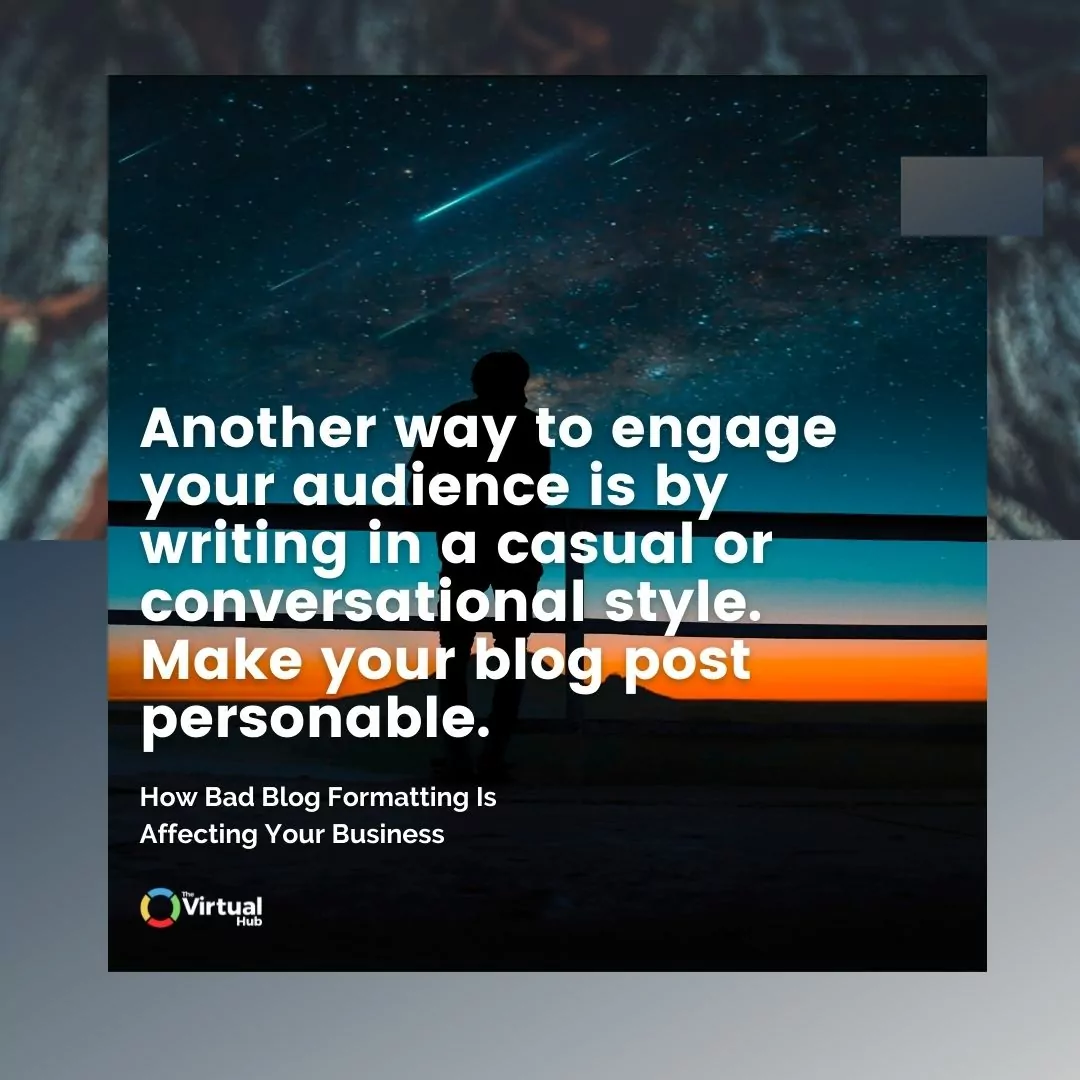
Bad Blog Formatting Can Make Your Business Look Out of Touch
Most people nowadays use their mobile phones and surf the internet. You may strengthen your presence on various mediums to help boost your brand. However, your blog layout should be compatible with your readers’ mobile devices.
What to Avoid: Not Keeping up with New Devices
When your website is outdated, it can hurt your brand’s credibility. Additionally, you can lose customers if you don’t provide them with an optimal viewing experience.
What To Do: Use Responsive Web Design
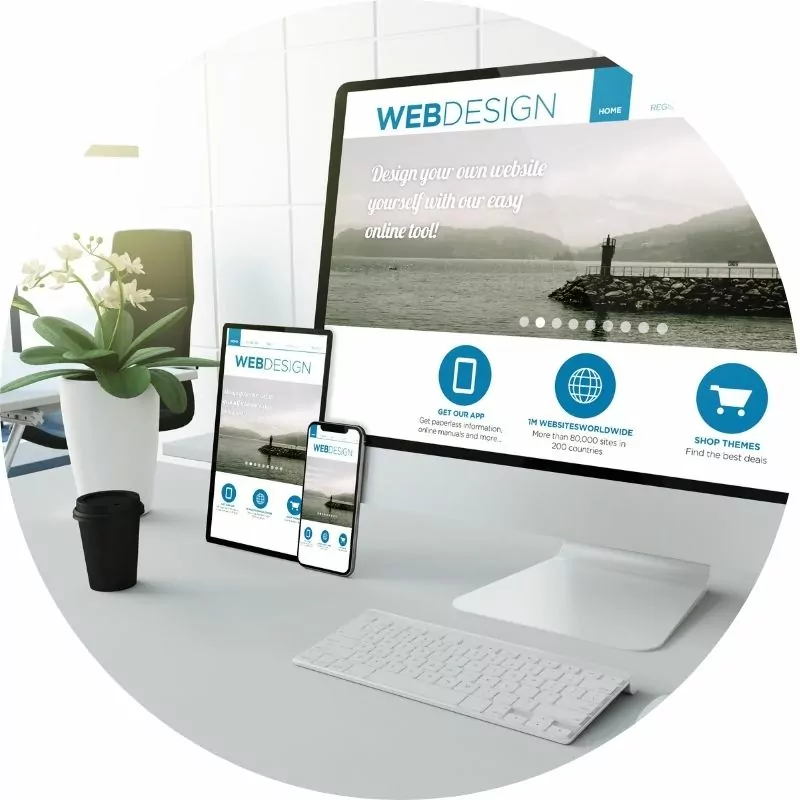
When you use cascading style sheets or CSS, flexible images, and fluid grids, your blog can have a responsive layout. Your website then adjusts depending on the device and automatically fixes its format and other elements such as width and visual content.
Afterward, you may maximize search engines like Google, and post on social media such as Twitter and Facebook. These will let your readers feel your online presence and make them think that they can easily connect with you.
Pro Tip: You may use a responsive WordPress theme so your blog’s layout will adjust based on your readers’ screen.
Bad Blog Formatting Can Lessen Reader Engagement
Rich and relevant content may grab your readers’ attention, but plain text and no images may reduce audience engagement.
What to Avoid: No Interactive Elements
When viewers go to your page, they just don’t want to read. They also wish to see photos and videos. Multimedia makes your content richer and more engaging. Avoid filling your entire blog with plain words.
In addition, avoid disabling comments on your page. This decreases interaction with your audience. Besides, isn’t it better to get feedback from your readers to make your content better?
What to Do: Spice up Your Blog Post
Add images, GIFs, infographics, and polls to your blog. Remember, people are visual creatures and we process information much better when it’s visually appealing.
In fact, posts with images get 94% more views than those without images. So if you want people to read and engage with your blog post, you need to include at least one image.
Additionally, create a safe space on your page where you encourage healthy discussion among your readers. These will keep them glued to your blog.
When choosing images for your blog, keep these tips in mind:
- Use Creative Commons images: With tons of free images you can find online, there’s no excuse for you not to add relevant images to your blog post! But before using them, be sure that they are licensed under Creative Commons.
- Add relevant illustrations: Ensure that the images complement the meaning of your text and suit your post. However, don’t add too many photos to the point that they already become distracting.

- Use Creative Commons images: With tons of free images you can find online, there’s no excuse for you not to add relevant images to your blog post! But before using them, be sure that they are licensed under Creative Commons.
- Add relevant illustrations: Ensure that the images complement the meaning of your text and suit your post. However, don’t add too many photos to the point that they already become distracting.
- Check the image size: Your photos shouldn’t be too large that it already occupies too much space.
- Add alternative text (alt text): Put description in the alt text field of your images to help your blog rank higher in search engines.
- Choose high-quality images: Avoid adding blurry pictures to your blog post if you don’t want to be perceived as an amateur in your field.
You may also incorporate a strong call to action or CTA to your blog to make your readers interested. This element is a powerful lead generation tool that can help convert your readers into high-quality leads, and later on, into customers.
Pro Tip: A good blog post is personable, so make your writing style casual or conversational to keep your readers engaged. Remember, you’re creating a blog, not a research paper. Use “you” or “your” often to make your readers feel like you're talking to them.
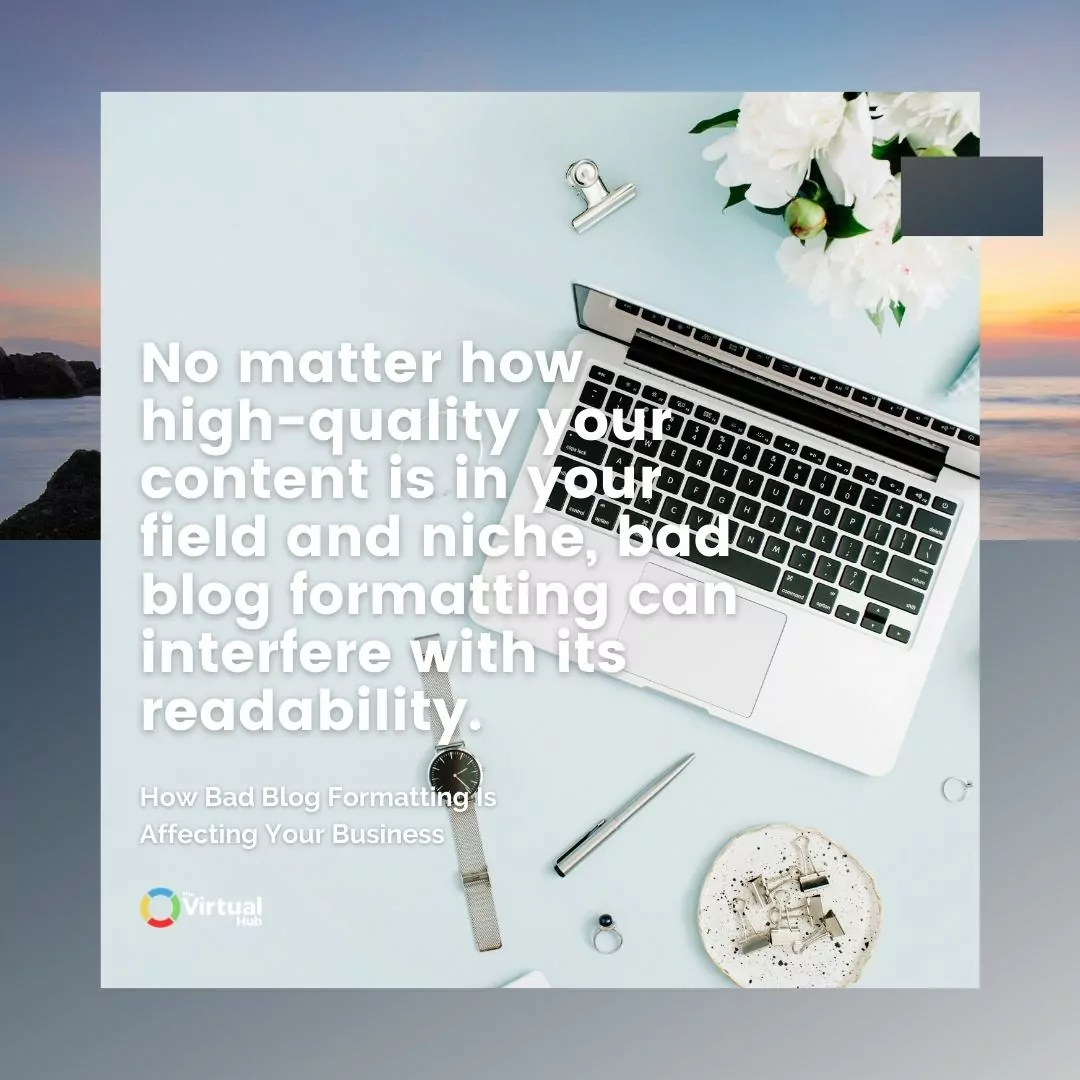
Bad Blog Formatting Might Target the Wrong Market
Your page title and domain name play a major role in targeting the right customers.
What to Avoid: Absurd Blog Titles and Domain Names
Misleading and irrelevant titles and URLs can attract the wrong audience to your blog. In addition, generic titles can lead to misunderstandings between you, your readers, and search engines.
What to Do: Craft a Good Title Tag
A title tag is an HTML element that lets you give your page a title. Here are some excellent tips to create a title tag that’s perfect for search engines:

- Follow a certain length: Avoid the risk of your title being cut off. When it’s too long, three dots would appear at the end. When this happens, readers might not identify what your blog is about.
- Accompany with a specific keyword: Your title tag can work miracles for your SEO if partnered with the right keywords.
- Be unique: You may be offering products and services similar to other e-commerce pages. Ensure to make yours as unique as possible.
- Add action words: Using action words can help attract viewers to click on the link and visit your page.
What to Do: Pay Attention to Your Meta Descriptions
A meta description is the brief snippet of text that appears under your blog post's title in a search engine. Think of it as your chance to make a good first impression--if it's well-written and enticing, people are more likely to click through to your site. However, if it's poorly written or full of typos, they're likely to keep scrolling.
What to Do: Provide a Table of Contents
Another way to ensure that you’re targeting the right audience is by offering an outline of what readers can expect from your blog. This way, they can easily jump to the topic they find interesting.
Pro Tip: You may use a WordPress plugin to improve your post title.
Final Thoughts
Creating content is just one part of the puzzle. You also need to format it in a way that will help you target the right audience for your business.
By following the tips we shared, you can write and format your next blog post like a pro! Just take the time to learn how to post properly, and pay attention to the right blog post format.
Keep your target market in mind, as well as your goals for writing the blog post. Doing so will help you avoid the pitfalls of bad blog format and ensure that your articles make the best possible impression on potential customers.
